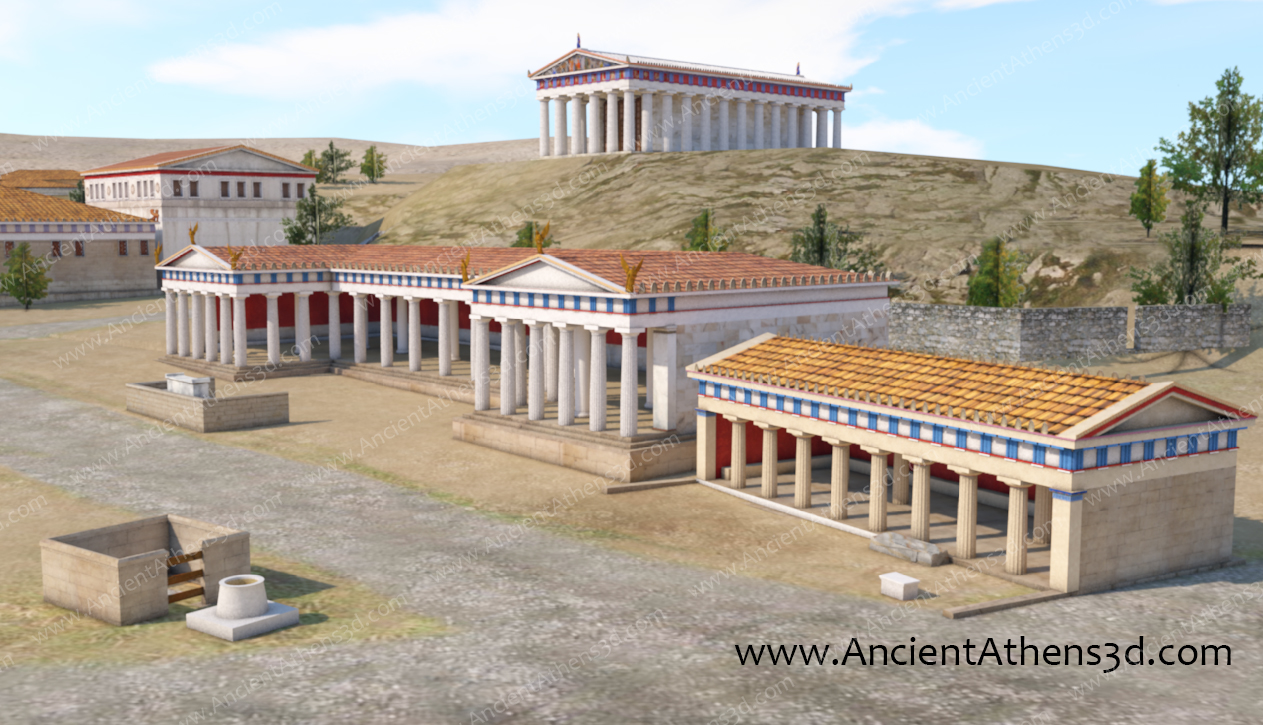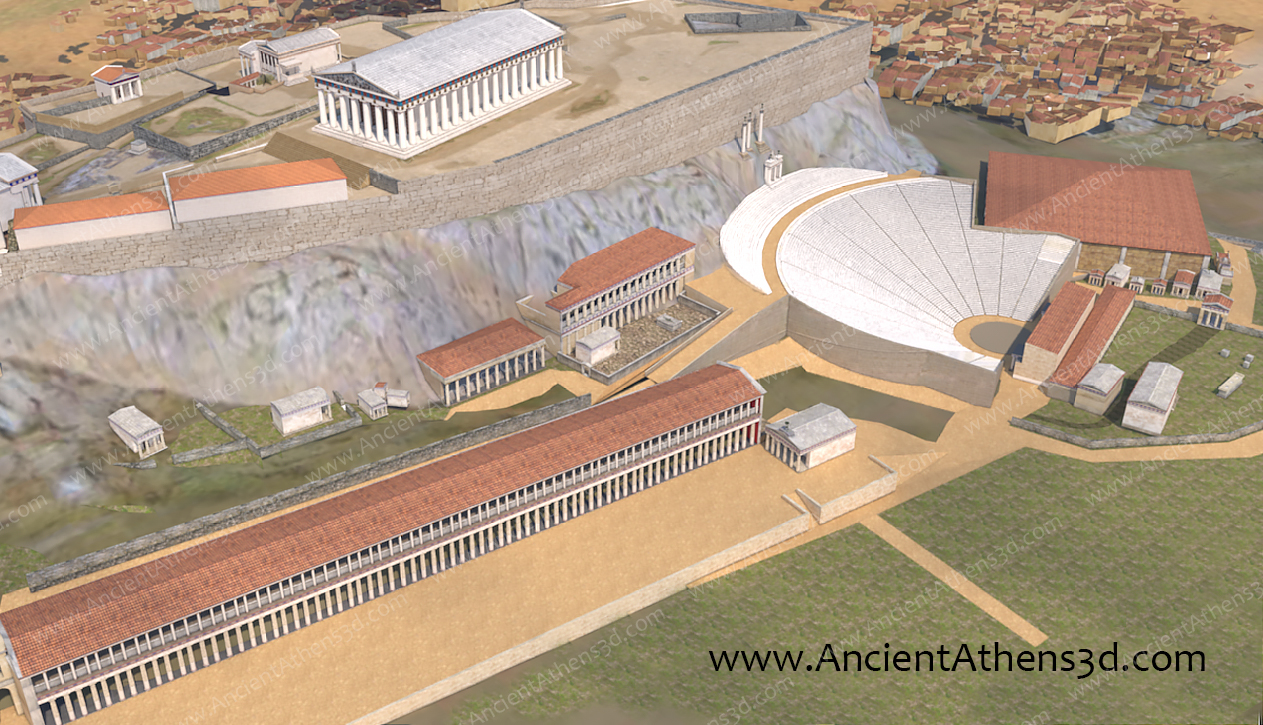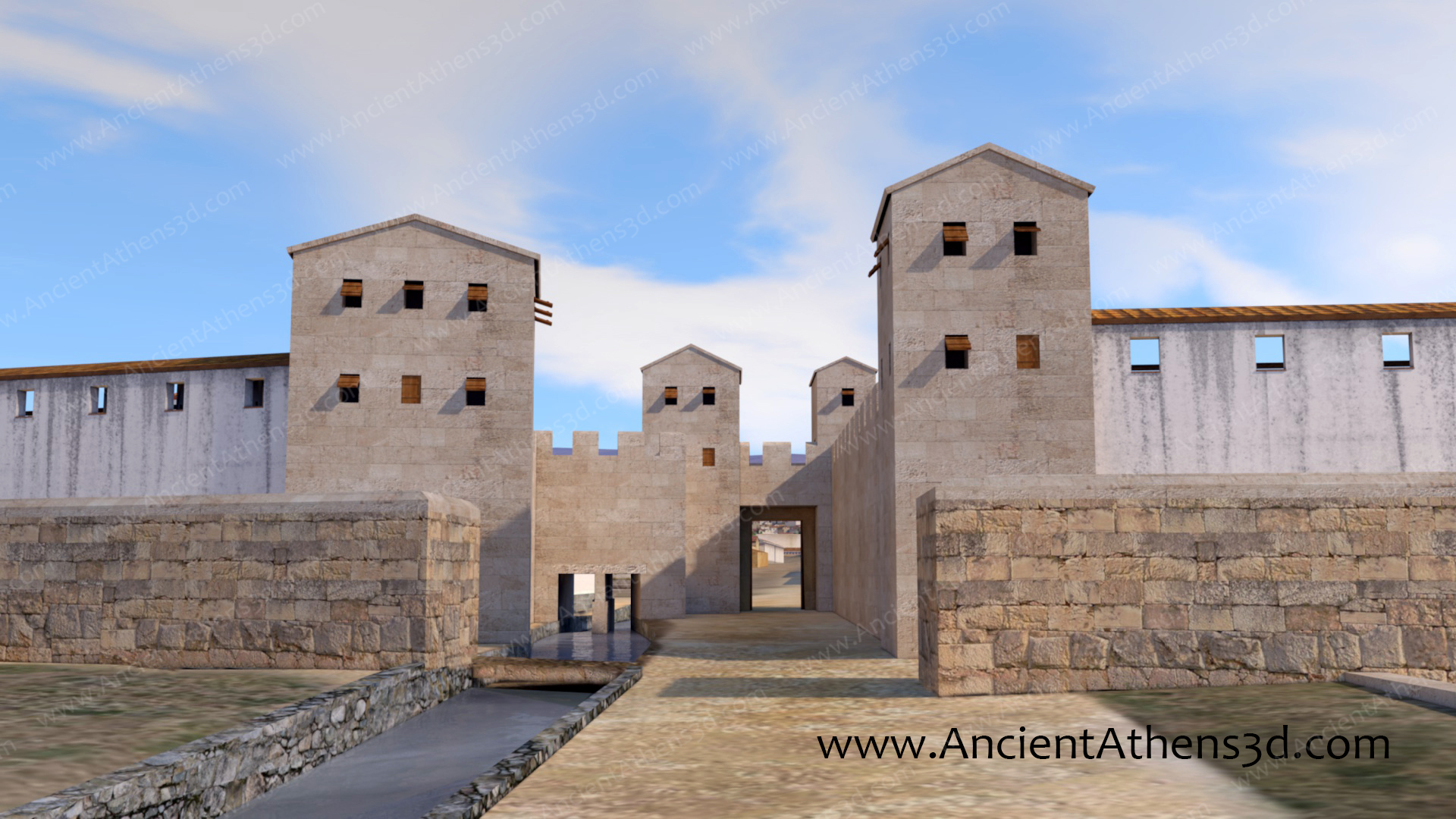The Parthenon
The Parthenon is an ancient Greek temple built on the Acropolis hill of Athens. It is a temple made of fine white Pentelic marble and was dedicated to goddess Athena, the patroness of the city of Athens.
The construction began in 447 BC after the orders of the Athenian statesman Pericles, as part of a general re-building programme on the Acropolis, since the older temples had been destroyed by the Persians in 480 BC. The Parthenon was built on the ruins of the unfinished and destroyed archaic temple, the so-called "Proparthenon" or "Hecatompedon". The architects were Ictinus and Callicrates, while the supervisor of the project and the sculpture decoration was the sculptor Phidias, a close friend of Pericles. The construction was completed in 438 BC and the last sculptures were placed in 432 BC.The Parthenon is a building of doric architecture, combining features of the Ionic order too, like the frieze and the interior Ionic columns. It measures about 31×70 metres and was 19m high. More specifically it is an octastyle, peripteral temple with a hexastyle amphiprostyle cella(for the types of ancient greek temples see here>>).
The temple had a rich sculpted decoration. The sculptures can be divided in three types: the metopes, the pediments and the frieze.
The metopes are square panels carved in high relief depicting scenes from the mythology related to the city of Athens. Parthenon had 92 metopes in total, all of which were decorated with relief sculptures. The metopes of the east main façade, depict the Gigantomachy, the mythical battle between the Olympian Gods and the Giants in which the Gods prevailed. The metopes of the north side depict scenes from the Trojan War, those of the west side depict the Amazonomachy, the battle between the Athenians and the Amazons, and the south depict the Centauromachy, the battle against the Centaurs. The two triangular pediments of the Parthenon contain full sculptures of gods and deities. The east pediment depicts the birth of goddess Athena, while the west depicts the quarrel between Athena and Poseidon for the sovereignty over Athens. The Parthenon frieze is a high-relief sculpted zone all around the cella of the temple. It is 160 metres long and it depicts the Panathenaic Procession, the most important religious festival of Athens. The frieze contains 378 human and god figures and more than 200 animals, mainly horses.The interior
The entrance to the main temple was from the east main door. Inside stood the gigantic statue of goddess Athena Parthenos (Virgin). The statue made by Phidias was created in gold and ivory and stood around 12 metres high. On her hand, the goddess held a Nike (Victory). In front of the statue was a water basin that provided the necessary humidity for the statue’s ivory conservation. The room was surrounded by a double doric colonnade which supported the roof beams.
The western smaller room was called “Opisthodomos” and was probably used as the city’s treasury, where among others was kept the treasure and the money of the Athenian League, which at the time was in full power. The roof of this room was supported by four large ionic columns.
The Hellenistic and Roman Parthenon
In 334 BC Alexander the Great dedicated gilded shields on the Parthenon, after his victory at Granicus, against the Persians. The shields were placed on the east façade. In later years more shields were added on the rest of the temple’s sides.
In 298-295 BC Lachares, the tyrant of Athens removed the shields and the gold from the statue of Athena, to finance his troops and for personal benefit. In the roman period an inscription dedicated to emperor Nero was added on the east façade.Parthenon as a christian church
AThe first big destruction of the Parthenon happened in 267 AD, when the Heruli invaded and destroyed Athens. The Parthenon was burned and the roof with the interior and the statue were completely destroyed. Repairs were carried out the following years (probably a few decades later). The new roof only covered the cella leaving the outer columns out. The interior double colonnade was replaced with re-used architectural material, taken from a stoa of the city. The gold and ivory statue of Athena was replaced with a much smaller one.
In the 6th century AD, the Parthenon was converted into a Christian church. The orientation of the main entrance was altered for the conversion. The ancient east door was sealed and replaced by the christian apse. The main temple was connected to the opisthodomos by a door that was opened on the middle wall, while smaller doors were opened on the side cella walls. At that time, most of the metopes were violently carved out and some of the statues of the east pediment were removed. The church was dedicated to the Mother of God of Athens (Panagia Athiniotissa) and was decorated with frescoes and mosaics. In the 11th century the church already had many valuable offerings and dedications and was one of the most important churches in the Byzantine Empire. The emperor Basil II chose the Parthenon to pay tribute to the Mother of God, after his victories against the Bulgarians. In the first years of the Latin occupation (13th century) a tower was built in the southern part of the opisthonaos, probably as a bell tower, and the building was converted into a catholic church (Notre Dame).Parthenon as a mosque






















